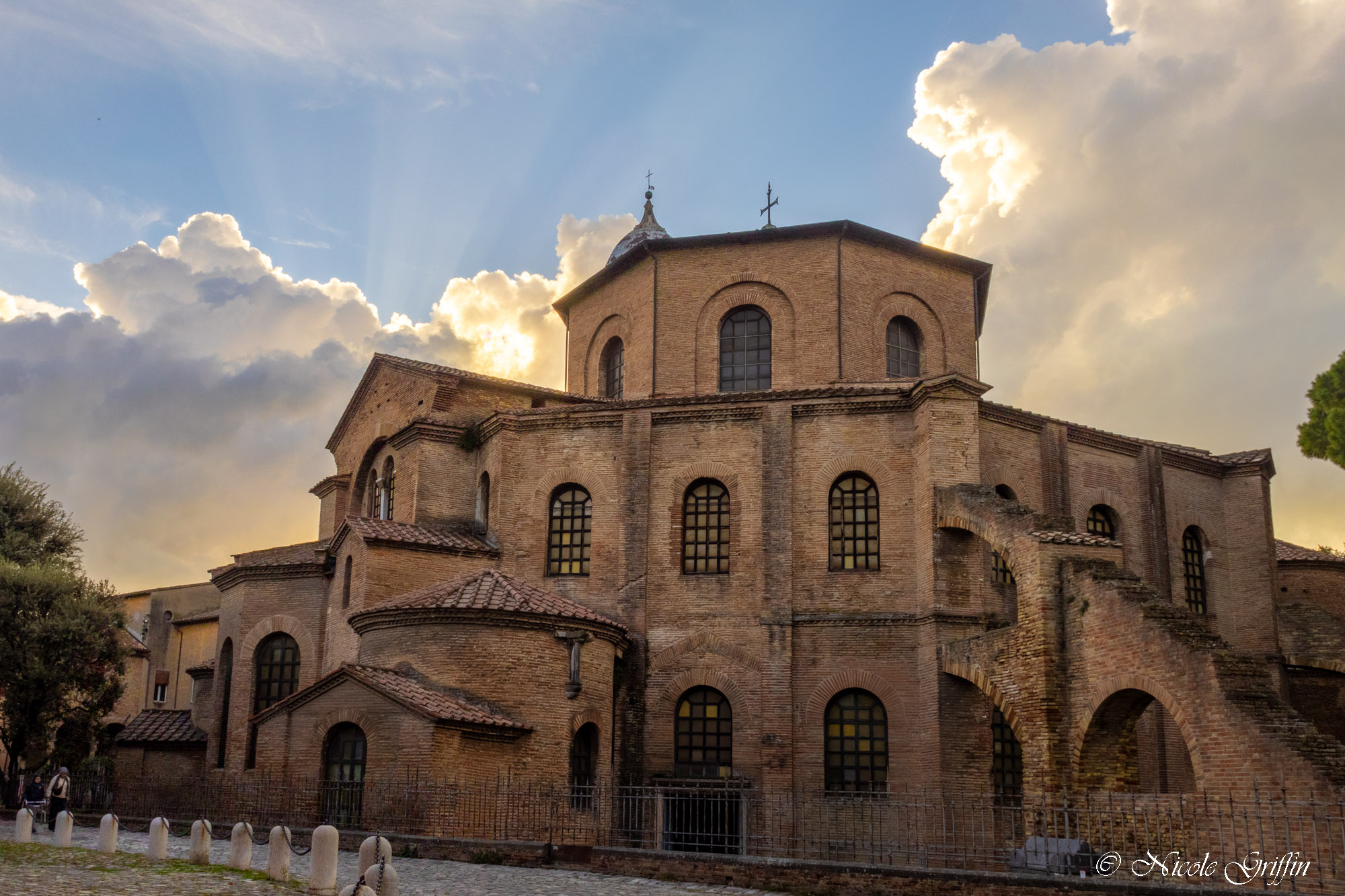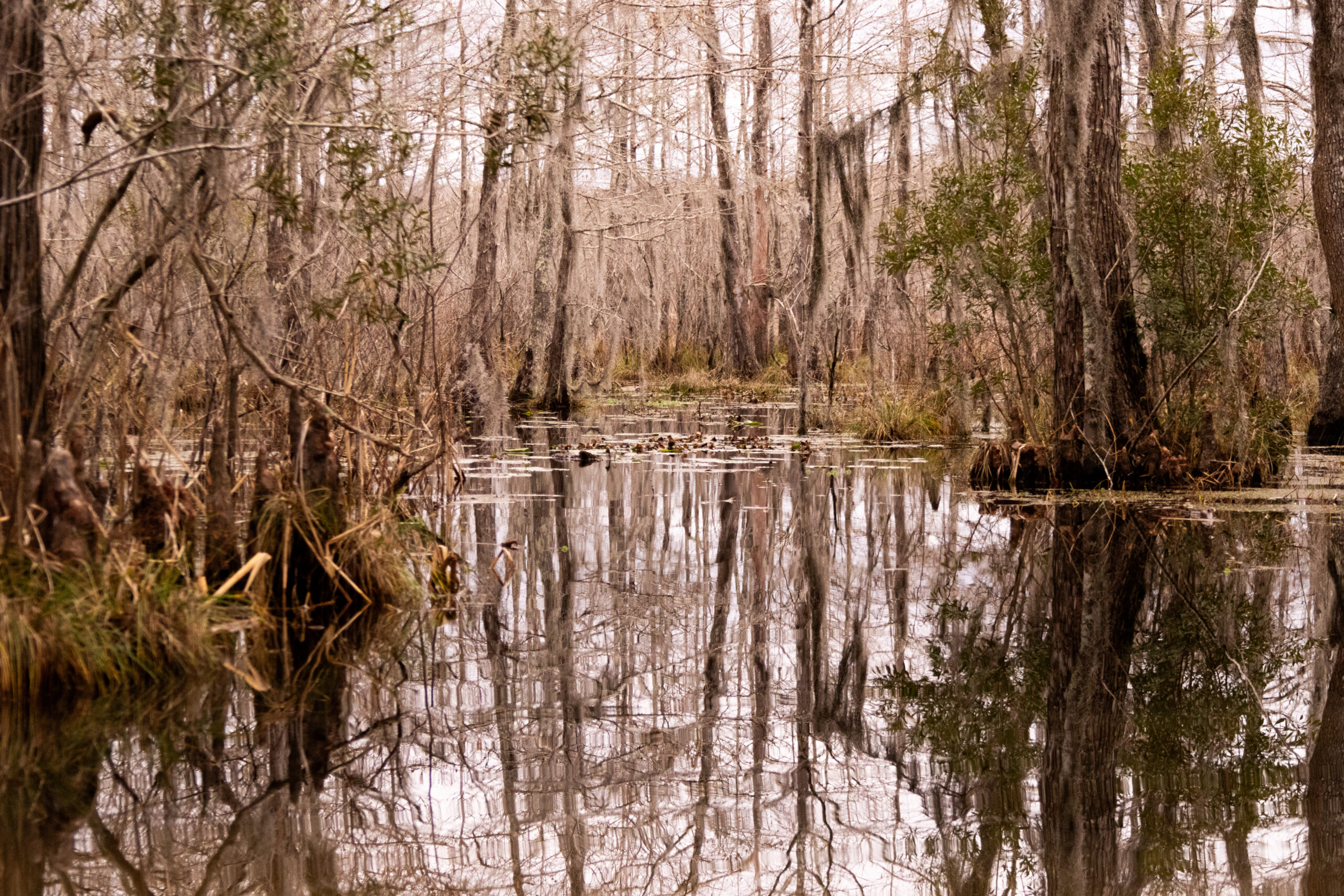On the evening of my arrival in Ravenna, I embarked upon my typical aimless journey of a new city. I had already purchased my pass to all of the city’s main UNESCO heritage churches and basilicas, studied the city’s map, and walked around town getting my bearings. I came upon the Basilica di San Vitale, which was on the next day’s agenda. The sky overhead was clear as the sun was setting, but white storm clouds billowed in the sky behind the 6th century church, concealing the last of the sun before it set.

Fast forward to the next morning, and I am speed-walking back to San Vitale from the covered market where I had stopped for a cappuccino and shelter, my hair sopping with water. My jeans are drenched through to the skin and the water has followed the gradient of my socks down into my boots, so I am quite literally wet from head to toe.
Finally, I reach the arched gateway to the basilica, where I have to pull out my phone in the pouring rain to show the staff my e-ticket, and then I dart as fast as I can to the entrance to the basilica. Ah, shelter! But even here, parts of the mosaiced floor are inch-deep in rain.

Such was my one full day in Ravenna: miserably wet. But you know? Even so, I really enjoyed the city.
I didn’t know much about Ravenna besides its name before I started planning this trip. But just a little bit of research into its fascinating history convinced me that it was a must-visit. During the late, troubled days of the Western Roman Empire, it briefly became the west’s capital in the early 5th century CE. When the Eastern Roman Empire took Italy back from the Visigoths in the late 5th-6th centuries, Emperor Justinian built Ravenna into a city glittering with mosaics in churches that remain remarkably well-preserved 15 centuries later.
These churches stand as monuments to a slice of time barely remembered in history books, when Rome itself had fallen but the Western Empire held on, imbibing influence from the Eastern Empire before west and east were fully sundered. The mosaics themselves are very eastern, and far better preserved than, say, those in the Hagia Sofia (for which the Basilica di San Vitale was an early prototype, according to my Bradt Guide to Emilia-Romagna). Truly, they are breathtaking works of early Christian art that display remarkable craftsmanship for their era, with human expressions far more lifelike than anything from the Middle Ages. Still, take the mosaics away, and the columns of classical Rome stand tall in places like the Basilica di Sant’Apollinare Nuovo.
In all, there are five UNESCO World Heritage sites in Ravenna. The Basilica di Sant’Apollinare Nuovo was just steps from my hotel. Unlike some of the other sites, this one required a pass but not a scheduled entry time. It was my first stop on the day of my arrival, before the rain started.
The next morning, I had an early appointment to visit the Battistero Neoniano, named for the 5th-century bishop (Neon) who commissioned its mosaics. This one required that you book a specific timeslot, so I braved the rain and arrived about 10 minutes early, praying they would let me in a bit early. (They did.)

I’ve already recounted my waterlogged journey from there to the Basilica di San Vitale, where I hunkered down for as long as I could manage. Fortunately, there was plenty of beauty to photograph there.

The namesake of the Mausoleo di Galla Placidia was the Constantinople-born daughter of the last Roman Emperor of a united and peaceful Rome. Later, in Ravenna, she ruled as regent for her son, and lived a colorful life during turbulent times for Rome. The mausoleum was built for her, but does not actually house her remains.
My appointment to see the mausoleum, whose quaint fauna-filled mosaics were my favorites, was at noon. Once again, I braved the pouring rain for a short jaunt across a courtyard a bit before my timeslot in the hopes I’d be allowed in, rather than being forced to stand in the rain. Again, the gambit paid off.

I did not make it to the fifth site, the Cappella di Sant’Andrea, because its limited opening hours did not align with my schedule.
I spent the rest of the day alternately eating and avoiding the rain. After the Mausoleo, I lost time at the Osteria del Tempo Perso, ate a lovely risotto and warmed up with a Sangiovese, before venturing back out into the rain in search of dry clothes, a warm bed, and a nap. Later, the rain finally gave up, and I emerged again for dinner and wine at the charming enoteca, Ca’ de Ven. (I mean really, where but in Italy can you find a bar with ceilings like this?)
It’s a rare city that can manage to charm me despite appallingly bad weather, but Ravenna did. The sense of being in a time capsule from a forgotten era that overwhelmed me when gazing at 6th century mosaics contrasted pleasantly with the clean, modern, small city that buzzed outside the church walls. History aside, it seemed like a nice place to live, which not every tourist city can claim.
























